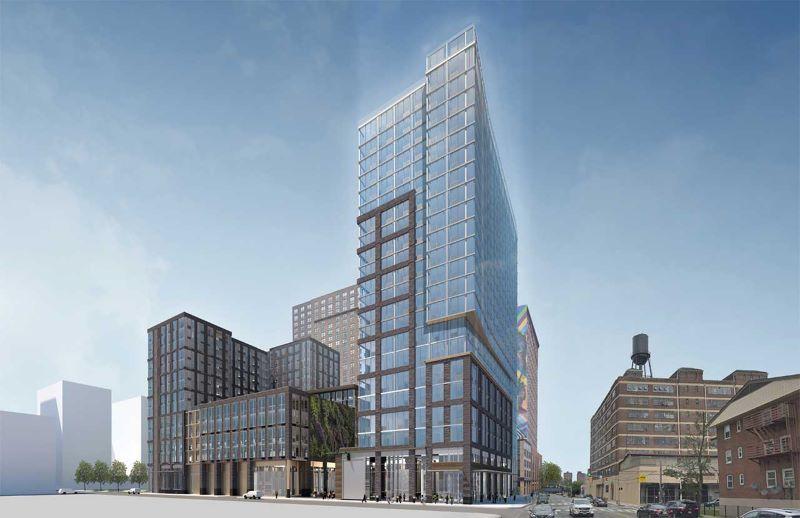A little liberty goes a long way
By Scott Beyer
October 12, 2022
The major cities of the Northeast have faced a paradox of high demand and low overall growth. Businesses still want to locate, for instance, in New York City, and people still want to move there, but a combo of taxes, high home prices and quality-of-life problems often discourage moving to the city itself. But across the river a different city—and a general area—has embraced urban growth where New York City eschewes it. Jersey City and others along the North Jersey shore have grown at a faster rate this last decade, creating what could be thought of as the 6th borough.
This starts with permits; Jersey City and neighboring cities build substantially more housing than most of the New York metro area at large. According to the Citizen’s Budget Commission, Hudson County overall permits well over double the rate of housing that New York City does (51 units/10ks residents vs. 22 units/10k residents). For this reason Hudson County is growing faster than New York City (7% vs 3% from 2011-2020) and the percentage growth rate since then is a whopping 18% for Jersey City.
Many renters move to Jersey City; it was one of the top 10 destinations for renters in the U.S. This includes New York City renters in particular, suggesting they can find a similar lifestyle across the river. Jersey City does have a high average rent price, at $3,821 for a 2-bedroom apartment, but it’s cheaper than New York City’s overall average of $4,927. Furthermore, the money stretches further along the west side of the Hudson River. As a local realtor stated: “In Jersey City you can purchase a brand-new construction condo with three bedrooms, two baths, private outdoor space, parking, laundry and roof deck with NYC views for less than $1 million. In many parts of New York City, this same condo would be upward of $2 to 3 million.”
What’s perhaps more notable are rents around Jersey City. Union City, NJ, is one of the densest municipalities in America. The average rent per 1-bedroom apartment there is $1,700 and the median household income is below $50,000. In Bushwick, a Brooklyn neighborhood noted for its gentrification, median incomes are similar but the average rent is $2,700. From 2014 to 2022, rents increased by 32% in Union City, but this was 6% lower than Bushwick’s rate. To be sure, lower home prices typically run along a gradient the further one searches from a central area. But Jersey City, where the finance industry grew 500% between 1993 and the present day, is arguably central in its own right. And it’s likely that high density construction there has made both Jersey City and neighboring suburbs like Union City more affordable.
New York’s housing production is anemic relative to demand, both in the city and surrounding non-Jersey suburbs. Notes the Citizen’s Budget Commission: “counties like Westchester, Rockland, Nassau, and Suffolk have some of the lowest housing production rates in the country.” Despite being known for density more than any other U.S. city, New York has in fact downzoned in recent decades. A 2010 NYU study found that out of 180,000 parcels, “14 percent had been upzoned, 23 percent downzoned, and 63 percent had not had their development capacity changed by more than 10 percent” the prior decade, reported Politico.
Jersey City, by contrast, encourages high-rise construction. According to SkyscraperCenter, the city is the 10th “tallest” in the United States (and 13th in North America). While Manhattan is famous for its skyscrapers, this is mostly a legacy from more permissive past eras, and now anti-height NIMBYism is common. By contrast, Jersey City has allowed a whole new skyline, with 35 of its 43 tallest towers getting built since 2000.
Jersey City also embraces other urbanist bona fides, often with a free-market twist. Several of the private ferries serving New York City stop along the Jersey City waterfront, providing connections to Midtown and Lower Manhattan, as does the PATH train, which provides 24/7 service, and a light rail line to points throughout the North Jersey suburbs. Interestingly, Hudson County also embraces private bus transit, with jitneys making trips throughout the day within North Jersey and to Manhattan, charging cheap fares. The city is also among those which have launched a subsidized microtransit service, supplementing other transit services.
But Jersey City is not just a bedroom community for New York commuters; jobs in the city itself have grown. Numerous financial district firms have opened satellite offices in the city dating back to the early 1990s. Tech interest and employment is also growing, with one software firm leasing tens of thousands of square feet even amid the pandemic.
Jersey City—and the larger Hudson County urban oasis that includes Union City, Hoboken, Bayonne and more—could make its case as a proverbial “6th Borough” of New York City. While it could always do more to liberalize its land use and other fiscal policies, it has done a much better job than New York City proper of accommodating the region’s population demands. As a result it has become a very different city the last decade, while much of the rest of the region stagnates under an anti-growth mindset.

